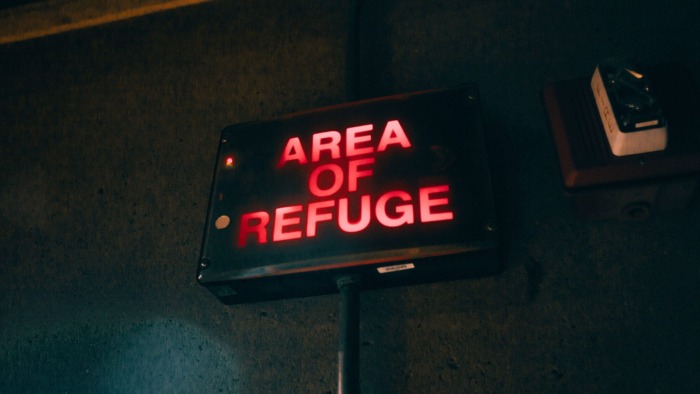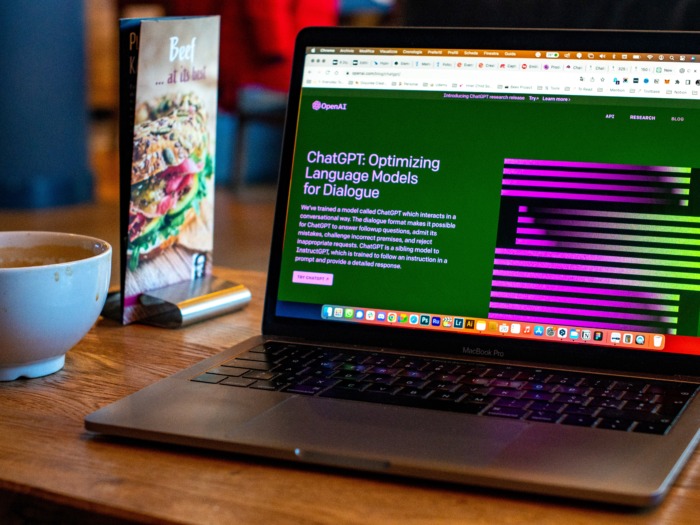
The term ‘new normal’ that we have heard so much about in recent weeks suggests that the changes the socio-economic environment is undergoing as a result of the coronavirus crisis will be significant and likely to last over time.
Aside from noticing the changes in our pockets, many say it will change how we relate to each other, and how we will behave as citizens and as consumers. Perhaps we will remember how clean the air was “the months we stopped the world” and take more into account the environmental impact of some of our decisions. Possibly we will also pay more attention to our health, spend more time with our loved ones, and be more supportive. We may also become more prudent, patient, and tolerant.
Some people go further and see the arrival of this “new normal” an opportunity to reset the system and question some of the rules of the game. (Although other people think that we humans are short-memory animals that we will soon forget everything we suffered during the pandemic and will go back to our old ways).
When COVID-19 arrived, companies and workers were already facing the challenge of adapting to what we then anticipated would be the ‘new normal’ of work.
In any case, regardless of what happens in the long term, it is very likely that in the short term some things will change (if they have not already changed) for the companies we work for, and also in our jobs. Even so, we should not forget that the world of work has been transforming for years and that when COVID-19 arrived, companies and workers were already facing the challenge of adapting to what we then anticipated would be the ‘new normal’ of work.
Before COVID, most companies were already aware of how volatile and uncertain the world had become. Words like ‘VUCA’ or ‘disruption’ had become terms of common use in business circles, and many businesspeople had already understood that in a scenario of “unexpected breaks or interruptions”, the survival of a company depends, above all, on its ability to change course without losing speed whenever circumstances require it.
In those days, companies were beginning to understand that to become more adaptable they needed to organize themselves differently. The formulation of the business strategy was no longer an exercise aimed at creating the future but had become an emerging process of continuous learning and adaptation. They also modified their work systems, replacing them with more flexible ones, and frequently ended up organizing their projects following the principles of the so-called ‘Agile methods’. Also, they bet on more organic, light and open structures, and organizational cultures based on freedom and responsibility, since managers began to see the advantages of treating people like adults and trusting them by default.
But for these new organizational models to work as expected, companies also needed something else: people with different capacities, or with combinations of capacities that were out of the ordinary. People who quickly assimilated all of these changes and adapted to the digitalized work environments where an increasing proportion of their work took place.
People, for our part, saw the consequences of all these changes in our jobs. Fundamental questions, such as what, with whom, where, when, how much, why, or what we work for, were no longer answered in the same way. The digital revolution was largely to blame. Advances in the field of artificial intelligence shifted the border between automatable and non-automatable tasks, leaving humans with occupations that require significant social interaction, or those that demand high levels of creativity or dexterity in unstructured contexts. In this way, humans kept the most complex tasks, while “machine work” seemed to finally be left to machines.
At the same time, we were beginning to realize that we were at increased risk of becoming obsolete (and losing our job) and that therefore our employability was something that we needed to pay more attention to. But there was another thing that had changed, and that was that our employability no longer depended only on having reached a certain level of mastery in our profession. Now we needed to be permanently alert and prepared for the many changes the future could bring us.
In that pre-COVID world of increasingly complex and changing jobs, companies were trying to carry out ‘strategic workforce planning’. They also tried to equip themselves with systems and procedures to quickly assign their people to those units or projects where they can add more value (rapid talent allocation). Still, HR professionals confessed to us that it was increasingly difficult to find people with the skills they needed in their organizations.
Sometimes, given that lack of skills of their employees, they went out to the job market in search of candidates who possessed that knowledge and skills, but what they found was a ‘war for talent’: many companies competing for few professionals, wage inflation and many mercenaries. On top of that, recruiters had no guarantee that those candidates would achieve the same results in a different organizational context than the company they had been working for up to that point.
Faced with this panorama (and in some cases also because they had understood that the employability of their people is an inescapable dimension of their social responsibility), more and more companies decided to ‘make’ those capabilities instead of ‘buying’ them in the market. To do this, they tried to anticipate what skills they would need in the future, and, from there, they designed programs for professional retraining or reskilling of their employees that would allow them to develop those skills (and consequently increase their employability).
Certain qualities of the person such as her curiosity, her openness, her adaptability or her orientation to learning objectives become prerequisites that must be worked on if the person does not bring them as standard.
These reskilling programs differed from past training programs in one fundamental way. Because the world was more volatile and unpredictable than before, these programs were no longer a succession of training actions designed for a person to acquire certain abilities, but rather a continuous learning process that never ends and for which certain qualities of the person such as her curiosity, her openness, her adaptability or her orientation to learning objectives become prerequisites that must be worked on if the person does not bring them as standard.
Employee reskilling, moreover, had become a topic of concern not only to companies and individual workers. The imbalances between supply and demand in the labor market were of such a dimension that they had become a major challenge for governments and other institutions. On the one hand, they threatened to slow down the economic development of sectors, or even entire countries, for lack of qualified workers. On the other hand, these imbalances also threatened to increase job insecurity, inequality, and, consequently, social stability.
In that context, institutions and citizens were beginning to become aware that social and labor market policies were insufficient to correct these imbalances. New ideas were needed to navigate these changes and shape a more sustainable future of work, understanding the term sustainability in its broadest sense. Hence the profusion of reports and initiatives in this field from institutions such as the European Union, the International Labor Organization, the World Economic Forum, the OECD, etc.
And that’s when the coronavirus arrived.
The impact on the world of work has been brutal. Millions of people have lost their jobs across the planet. In its latest report on the subject, the International Labor Organization (ILO) reveals that approximately 1,250 million people work in sectors that are at risk of suffering a particularly “drastic and devastating” impact as a result of this crisis. The most probable, therefore, is that we will see movements in the sectoral composition of employment and that many people will have to learn to do other jobs, simply because the demand for what they have been doing until now will be significantly reduced.
We have had to learn to work remotely in an exercise of exploration, trial, and error. But still, we cannot afford to become complacent.
Meanwhile, the luckiest of us have spent weeks working from our homes, making family life and work activity compatible. In some cases, we have seen the fruits of the digital transformation programs our companies have carried out all these years, while on other occasions, we have had to learn to work remotely in an exercise of exploration, trial, and error. But still, we cannot afford to become complacent.
Concerning remote work, we must also bear in mind that, since it will foreseeably remain as a common practice, companies may be more open to hiring professionals residing in other countries, as we will work for foreign employers more frequently, all of which could contribute to further globalization of the labor market.
However, regarding the globalization of the labor market, we also find trends in the opposite direction. For example, how migration flows change. As foreign workers lose their jobs, many of them decide to return to their home countries to spend these difficult times close to their families. At the same time, traveling gets disrupted, so new immigrants stop arriving. Both phenomena affect the labor market, and we are already beginning to see the consequences, particularly in countries where immigrants represent a large part of the workforce, or where they need them to counteract the aging of their population.
And those are not all the changes that COVID-19 can bring about in the world of work.
In December 2019, at the Climate Change Conference held in Madrid, the ILO presented the second edition of its report Skills for a Greener Future. It analyzes the challenges in terms of job retraining and skills improvement that need to be addressed to realize the job creation potential of the so-called “green transition” and minimize the risk that this process leaves many people unemployed and increases poverty and inequality. The document made clear that a fair transition towards environmental sustainability will require the upskilling and retraining of a large number of workers and paying attention to the specific needs of the most disadvantaged groups to help them adapt to those changes.
Five months later, I wonder if, in the same way that we were talking about skills for a greener future, we should now begin to debate about which are the professional competencies in which we will have to focus in the post-COVID era. They may be the same capabilities that in the past we thought we would need for the future of work, only that we will need to develop them faster. But they could also be other different abilities.
Stay alert.
Did you like it?
Future for Work Institute operates on an annual subscription model that includes access to our calendar activities and knowledge repository resources, as well as in-company services.
Plan
Curiosity
Recommended for HR teams of between 5 and 20 people.
Plan
Pioneer
Recommended for HR teams of between 15 and 100 people.
Plan
Exploration
Recommended for HR teams of more than 100 people.
Plan
Horizons
For more complex organizations.
Already Registered? Log in here







